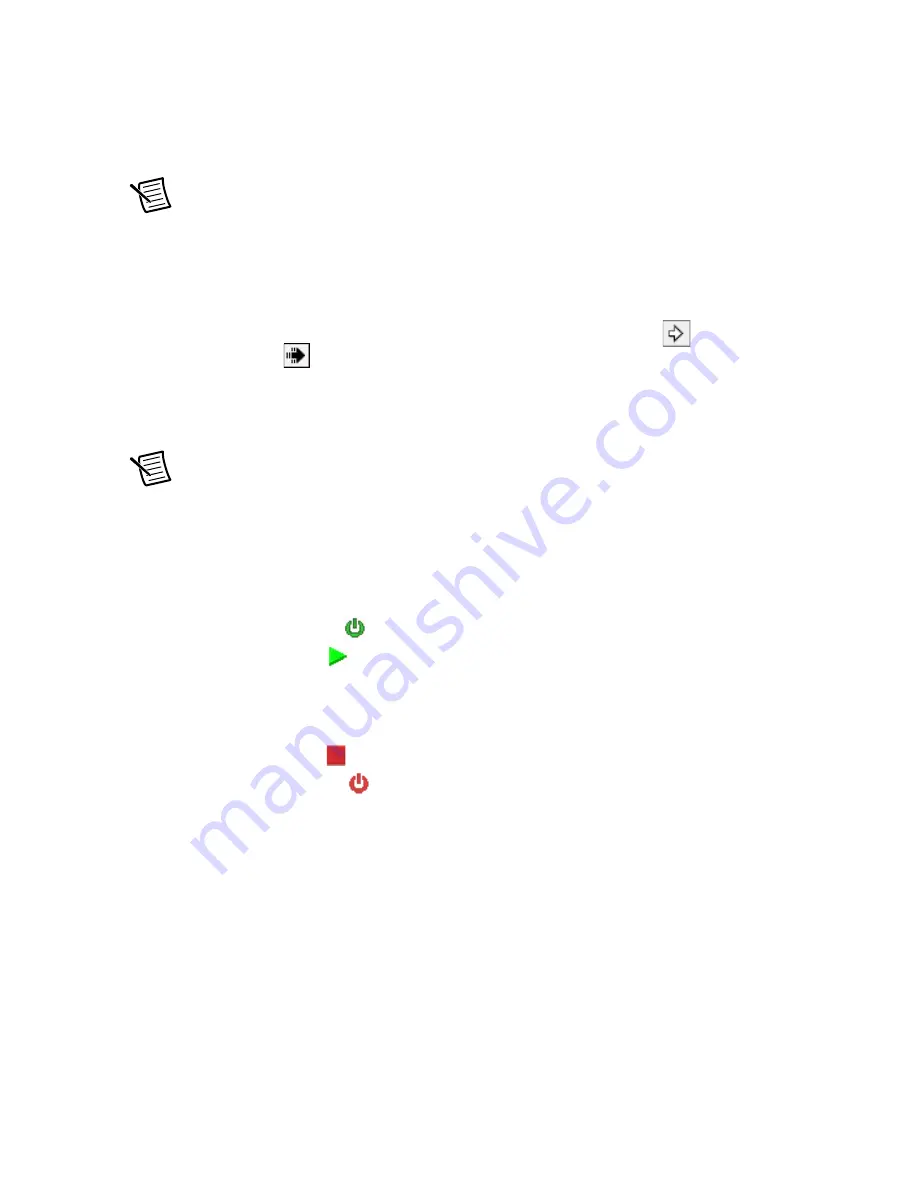
NI 9503 C Series Stepper Drive Modules and SoftMotion Module
|
© National Instruments
|
11
4.
Right-click the
Chassis
item in the
Project Explorer
window and select
Deploy
from the
shortcut menu.
5.
Click the Run button on the
9503 Stepper Drive (Getting Started) -
FPGA.vi
. Clicking the
Run
button compiles the VI only if the VI or project has changed
since you last compiled the VI.
Note
The compilation process goes through several stages. Compiling FPGA VIs
can take from a few minutes to a few hours. National Instruments recommends
testing and debugging an FPGA VI before you compile it. Refer to
Introduction to
Debugging FPGA VIs on an FPGA Target
in the
FPGA Module Help
for more
information.
6.
Verify that the FPGA VI is running. When a VI runs, the Run button (
) changes to a
darkened arrow (
) to indicate that the VI is running. If the VI is not running, press the
Run button.
7.
Right-click the axis in the
Project Explorer
window and select
Interactive Test Panel
from the shortcut menu.
Note
If the Scan Engine was not automatically transitioned from Configuration to
Active mode, close the Interactive Test Panel and perform these steps: right click on
the CompactRIO target in the project
»
Utilities
» Scan Engine Mode »
Configuration, then repeat this step to change to Active. Once this is complete,
the axis parameters will be sent to the FPGA VI and SoftMotion’s engine will be
activated.
8.
Click the
Enable
button (
) on the bottom of the dialog box to enable the drive.
9.
Click the
Start
button (
) on the bottom of the dialog box to start the move with the
configured options. If you encounter any errors or faults, refer to the
Tips and
Troubleshooting
section for possible solutions.
10. Use the
Status
and
Plots
tabs to monitor the move while it is in progress.
11. Click the
Stop
button (
) to stop a move in progress.
12. Click the
Disable
button (
) on the bottom of the dialog box to disable the drive when
you are finished testing it.




































